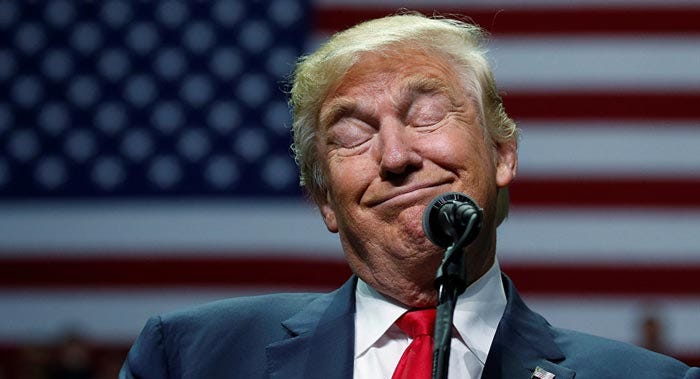The way political journalism worked before Donald Trump seems quaint in retrospect. If it was a presidential election year, a reporter was assigned a candidate to cover. The first task was to contact the campaign and notify them of the assignment. If the campaign was a serious one, press credentials were issued to allow access to the campaign headquarters and into his – it was always a “he” –rallies. In the old days, if the paper or network you worked for was important enough, your pass would get you onto the “press plane” and onto the bus populated by the “Boys on the Bus,” in the words of the title of Timothy Crouse’s best-selling book on the way the press covered the 1972 presidential campaign. The “boys” were the other political journalists following the campaign, because with perhaps one or two exceptions, there were no female political reporters.
You didn’t have to cover American politics very long to realize that politicians lied, prevaricated, said things that were demonstrably untrue all the time. It didn’t take much longer to learn that you weren’t there to report their lies. You were there to report what politicians said. You were, in effect, a stenographer. Lies, if they were remarked upon at all, were the domain of pundits.
As a political reporter, you could point to gaffes, however. Remember gaffes? A good part of the job of a political journalist was to endure hours and days and weeks and months of tedium on the campaign trail waiting for that ever-hoped-for moment when the candidate would make a gaffe, and you were there to witness it and write about it. A candidate would sometimes say what we now call “the quiet part out loud,” expressing his real view that cutting taxes actually did affect the deficit, rather than give his talking point that tax cuts would raise revenues instead of adding to the deficit. A candidate might misspeak, or, as Edmund Muskie was said to have done in New Hampshire while running in the 1972 Democratic primary, break down in tears right there in front of the press, and everyone would run to the phones to call in this groundbreaking political moment that was certain to bury his candidacy, which it did.
If you were lucky after days and weeks and months on the road, you might be there when a candidate makes a mistake, saying he was in Des Moines when he was actually in Detroit. If a candidate told a lie out loud, it wouldn’t be called that, of course, because the press didn’t accuse politicians of lying back then. It would be called a “distortion” or even a “falsehood,” but never a lie. The way you couched the statement that wasn’t true would indicate the seriousness of its falsity. If a politician claimed that he had never been unfaithful to his wife, you would repeat that, but then maybe indicate that he had been seen “in the company of” another woman once or twice, hinting at his unfaithfulness. Incredibly, it once took a photograph of presidential candidate Gary Hart with Donna Rice, a young campaign worker, sitting on his lap, to disprove Hart’s denial that he was a “womanizer.” But just as incredibly, he wasn’t called a liar for claiming faithfulness that wasn’t there.
Those were the “before” days. It boggles the mind that we have been in the “now” days for more than nine years, since the twice-divorced platinum playboy descended the golden escalator in Trump Tower in 2015 and, unburdened by the more than two dozen women who had accused him of sexual harassment and sexual assault, greeted the political press who had gathered, they thought, to report that Donald Trump had announced his candidacy for president.
A few months later, I wrote this for the Village Voice: “What we are watching every day is ‘pageant Trump,’ and it’s why the national political press has been so confused. Covering him is like covering the Victoria’s Secret fashion show: It’s supposed to be hot and sexy and fun and irresistible, but it turns out to be just a bunch of pneumatic posing – all feathers and sequins and nylon and cheap lace from China, as sexless as one of Trump’s silent wives. Donald Trump is the Wonderbra of American politics. He pushes everything Up and Out and In Your Face. But you know what’s left when the Wonderbra comes off, don’t you? Donald Trump sure as hell does.”
This is an excerpt from my weekly column in Salon. To read the rest of the column, follow this link:




We don't have to use our imaginations to picture a Wonderbra coming off when we know that Trump wears both a man-girdle and a diaper. He's literally a 6' tall and 280 pound sack of spray-tanned and combed-over crap wrapped-up in what he claims to be a 6'3", 215 pound sack.
Loved all the word visuals, Lucian. Trump as the fake-it-til-you-make-it "Wonderbra of American politics." So apropos and honest. Poetic, even.